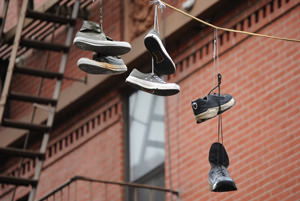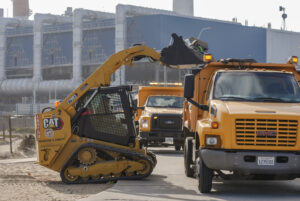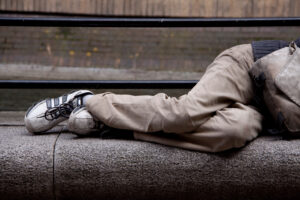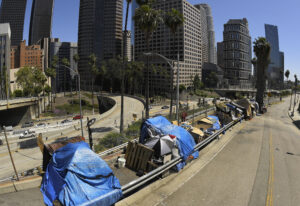Spiraling Rents Squeeze the Nation’s Working Poor
Increasing rents and stagnating or decreasing household income have pushed more families into homelessness, even as overall homeless rates have declined. At the same time, the number of families paying more than half of their income for housing has increased 5.5 percent to 6.5 million.
There’s more to a housing crisis than foreclosures, and The Atlantic Cities site reports Tuesday on the increasing financial squeeze low-wage families face in just trying to pay their monthly rent bill. What hangs in the balance: Homeless families headed by people with jobs.
The Atlantic Cities piece spins off a recent essay by former Talking Heads frontman David Byrne about how the skyrocketing cost of living in New York City threatens its role as a creative and cultural center. According to the article:
The plight of artsy types in cities gets a lot of attention these days, perhaps because it is personally relevant to lots of people in the media. And yes, working artists are vital to any city, especially a place such as New York that bills itself as a cultural capital. But forget, for the moment, about the artists. The deeper and more systematic erosion of urban life is happening among a less glamorous set of people – the ones who fill the tens of thousands of jobs that undergird every single U.S. city.
These are the home health aides, the fast-food workers, the janitors, the teachers’ aides, the delivery people, the manicurists, and countless others who are making more than minimum wage but less than enough to meet the soaring cost of living – not just in New York, but in cities around the country. These people, increasingly, are falling off the shaky ladder of economic viability, and many are being pushed into homelessness.
The piece dives into data compiled in April by the National Alliance to End Homelessness that found overall homelessness in the U.S. is falling even as it’s increasing among families. The root cause was the Great Recession, with families on the economic margin falling off the edge as jobs dried up, or wages stagnated, while basic rents increased.
According to the NAEH, 38 states registered an increase in fair-market rents between 2010 and 2011, with the average cost of a two-bedroom rental increasing by 1.5 percent nationally. At the same time, median household income decreased by 1.3 percent nationally, with only 14 states reporting increases. The number of households spending more than 50 percent of their income on housing — more than 50 percent! — went up 5.5 percent over the same period, with some 6.5 million households exceeding that threshold.
Think about that. More than 6.5 million households spending at least half of their income just to sleep indoors. The data noted that homelessness is rising the most, and the fastest, in the same markets — such as Seattle and Portland, Ore. — where housing prices have recovered and are increasing again.
Beyond the poverty and homelessness implications, regional segregation by affordability of housing also exacerbates traffic and air pollution problems. UC Davis’ Mapping Regional Change program reported two years ago that “developing the right fit between available housing types and the income level of households is an important part of regional planning and development. An imbalance in low-wage jobs and affordable housing is of concern not only for those low-wage workers who face challenges in finding affordable housing near work, but is of concern for regions as a whole, since it makes it more difficult to reduce overall vehicle miles traveled and potentially contributes to an excess fiscal burden on those jurisdictions with higher proportions of affordable apartments and houses.”
—Posted by Scott Martelle.
Your support matters…Independent journalism is under threat and overshadowed by heavily funded mainstream media.
You can help level the playing field. Become a member.
Your tax-deductible contribution keeps us digging beneath the headlines to give you thought-provoking, investigative reporting and analysis that unearths what's really happening- without compromise.
Give today to support our courageous, independent journalists.








You need to be a supporter to comment.
There are currently no responses to this article.
Be the first to respond.